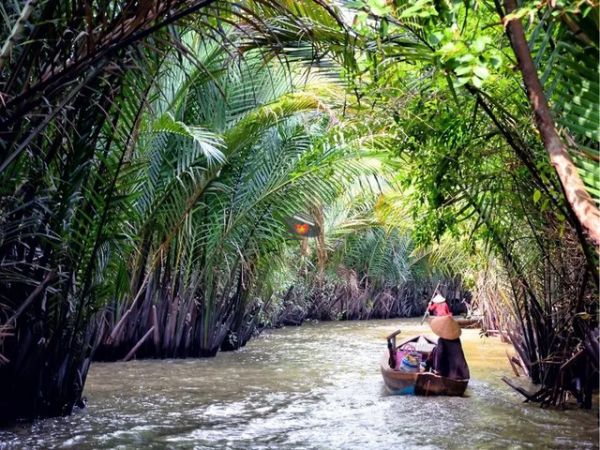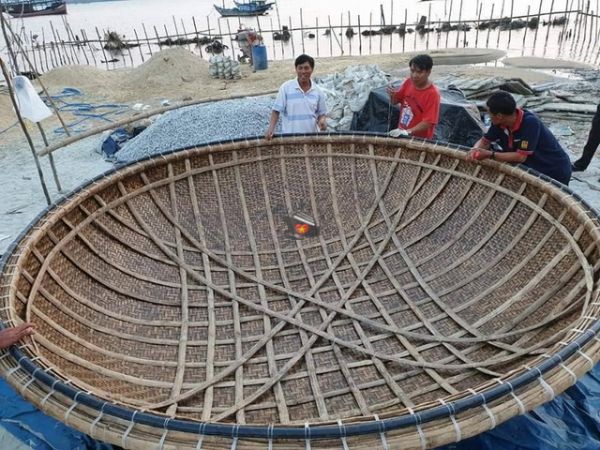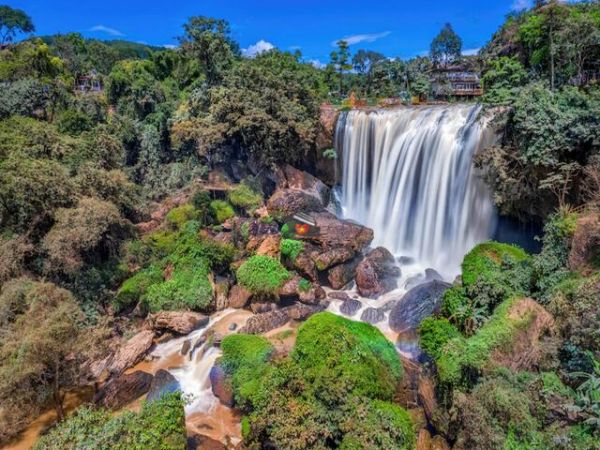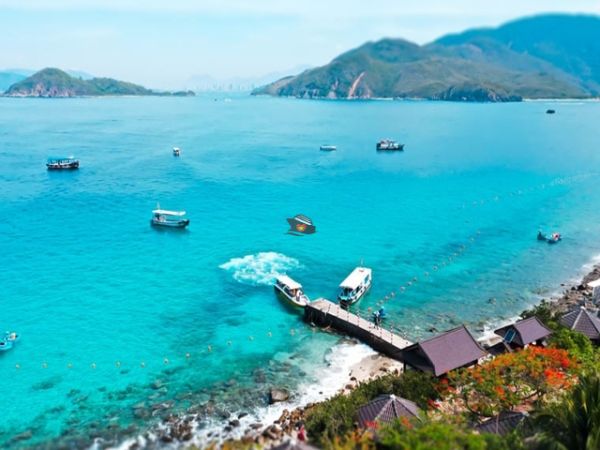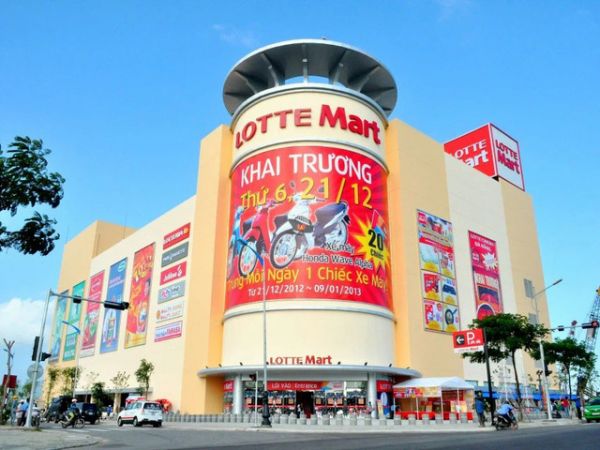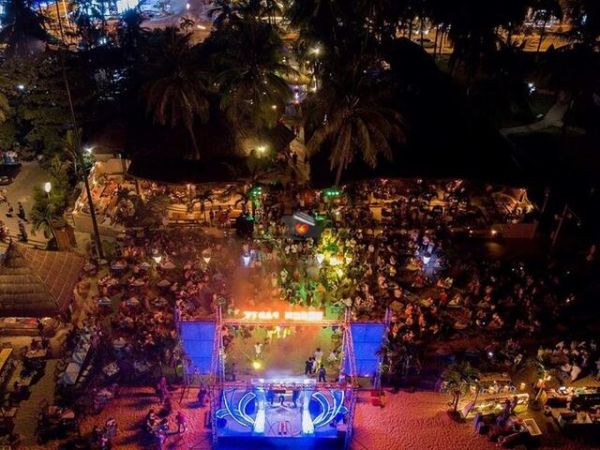JAPANESE BRIDGE IN HOI AN

Japanese Bridge In Hoi An. The Japanese Bridge Hoi An, located in Hoi An Ancient Town, is a UNESCO World Heritage Site and one of Vietnam's most popular cultural attractions. Built in the 17th century, this landmark has witnessed several transformations in the town. Let’s join Nha Trang Day Tours to discover and explore the cultural beauty and timeless history of this iconic bridge, a true symbol of Hoi An. You will not regret visiting Hoi An City.
Japanese Bridge In Hoi An Directions & Information:
The design of the Japanese Bridge in Hoi An is extremely unique:
The Japanese Bridge in Hoi An is a stunning reflection of the town's rich heritage. For millennia, the bridge has united the past, present, and future.
The Japanese Bridge in Hoi An, known as "Cau Pagoda" (Bridge Pagoda), was built in the 17th century with Japanese businessmen’s assistance. As a result, the bridge is associated with a legend of a monster called Namazu. Specifically, Namazu is a Japanese mythological monster whose movements cause earthquakes and floods. Its head is located in India, while its body is in Vietnam and its tail is in Japan.
The bridge was built with the belief of a magical sword to pin down Namazu’s back. Therefore, the monster could not wriggle, preventing natural disasters in Vietnam, Japan, and India. Hence, the lives of people in these three countries would be in peace and prosperity.
In 1719, Lord Nguyen Phuc Chu came to Hoi An and carved the bridge's name in three Chinese characters on the entryway, which translates to "Lai Vien Kieu" in Vietnamese and "the bridge to receive guests from afar" in English. Furthermore, the pagoda was dubbed the "Japanese Bridge" or "Japanese Covered Bridge" since it was mostly built by Japanese people.
On February 17, 1990, the bridge was designated a National Historic - Cultural Heritage Site.

>> View tour details: Hoi An Shore Excursions - Prices From 85 USD/Person
The Architecture of the Japanese Bridge:
The 18-meter-long bridge connects Tran Phu Street (the Chinese quarter) on the east to Nguyen Thi Minh Khai Street (the Japanese quarter) on the west. It spans the Thu Bon River, creating a tranquil and nostalgic scene.
The bridge and top were mostly composed of red lacquered wood, with the foundation made of stone. Although it is generally referred to as the "Japanese Bridge," the building is an amazing blend of Vietnamese, Japanese, and Chinese cultures, from the materials to the patterns and embellishments.
The bridge exemplifies Japanese design with a magnificent curving canopy that covers every inch of the structure. The roof was covered with yin and yang motifs, which symbolize Vietnamese culture and architecture.
On either side of the bridge, there are little passageways and chairs where visitors can relax and take in the fresh air. The temple and bridge are divided by a small wooden wall.
A dog and a monkey stand at the bridge's entrance and departure, respectively. They are the guardians of the bridge because they represent protection and safety in Japanese culture. It is also stated that these two sculptures began construction in the year of the Monkey and were completed in the year of the Dog.
Over 400 years, the Japanese Bridge in Hoi An has undergone seven modifications, including those in 1763, 1815, 1875, 1917, 1962, 1986, and 1996. Small changes have been made to the roof, floor, and pillars.
The Minh Huong Commune, a commune in Hoi An at the time, was responsible for the bridge's first three repairs. During the French colonial period, the pedestrian-only bridge was turned into a motorized vehicle bridge in 1917.
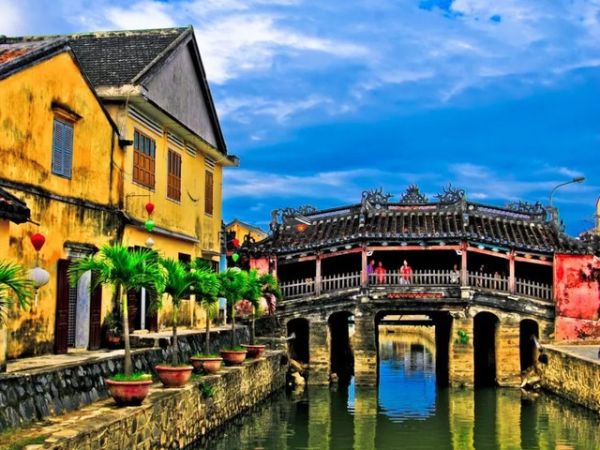
In 1962, the Quang Nam province administration continued to restore the Japanese Bridge. The bridge was returned to its former pedestrian-only configuration in 1986. The latter two renovations, in 1986 and 1996, were regarded as the most significant.
The bridge has deteriorated after its previous maintenance owing to severe floods in Hoi An City. Many of the bridge's poles and beams have deteriorated, underlining the need for immediate restoration before the bridge falls.
As a result, the Quang Nam province administration approved a roughly $1 million effort to maintain the bridge. The real renovation began in early 2020, intending to keep the bridge open.
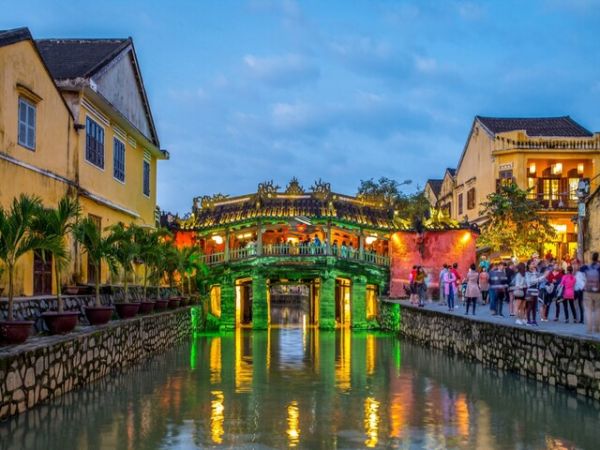
How To Get To Japanese Wooden Bridge?
The Japanese Covered Bridge is located near the western extremity of Hoi An Ancient Town. Visitors may reach the bridge by beginning at Central Market and walking along Tran Phu Street. There are cafés and restaurants on both sides of the street, so you can grab a refreshing drink or a tasty meal before exploring. Once you reach the end of the street, you will notice the bridge's entrance.
The Japanese Bridge in Hoi An has served as a symbol and spirit of the ancient town. An image of the bridge was chosen to put on the back of Vietnam's 20,000 VND currency, guaranteeing that this well-known location has a unique importance for Vietnamese people.
Unlike other temples, the Cau Pagoda honors the northern deity Tran Vo Bac De, Hoi An's god of prosperity, fortune, and health. As a result, the Bridge Pagoda in Hoi An serves as both a popular tourist attraction and a religious spot where locals may unwind and pray for good fortune.
The bridge was erected initially over the Thu Bon River, and the temple was built 60 years later on the north side of it. If you decide to visit the monument, don't miss any of these two locations.
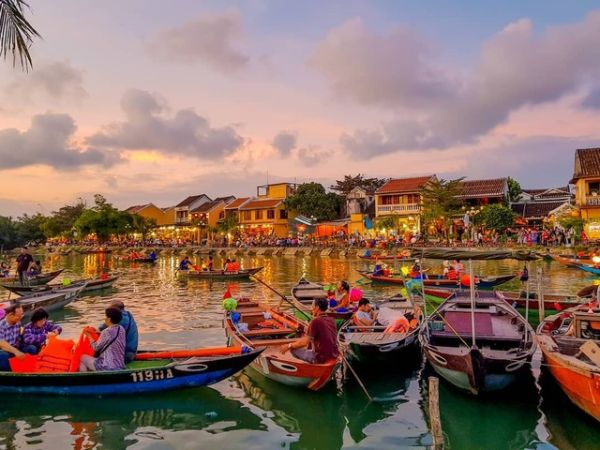
Hotline/WhatsApp support: +847-6666-0606





